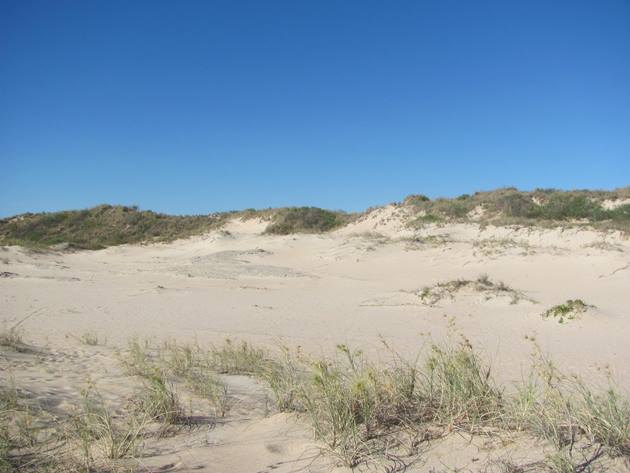
Two weeks ago I introduced you to two pairs of our Pied Oystercatchers that were early egg layers this year and this week the eggs have hatched out after twenty eight days of incubation. Both pairs of Pied Oystercatchers are in a very public area of Cable Beach, but they are always successful with their egg incubation each year. Sadly the outcome from here is often chick loss from predation, but for now we will enjoy observing the two families of Pied Oystercatchers as they wander the dunes and come down to the ocean to feed when there are less people around. Although it is winter here in Broome, it is all blue skies, cool nights around 15c/59f and warm days generally around 30c/86f. Cable Beach in Broome is a lot busier at this time of year due to this “close to perfect” weather.
One pair of Pied Oystercatchers nest just north of the rocks on Cable Beach and have to deal with the four-wheel drive vehicles and camels on the beach, but as soon as the eggs have hatched out they move the family approximately two kilometres further north through the dune system. In the above photo the grey rocky sandstone midway between the front and rear dunes has been there nesting area for the past twenty eight days and now they are on the move. We observed the adult Pied Oystercatchers finding small creatures in the soft sand and feeding them to the chicks. At no other time do we observe the Pied Oystercatchers feeding from the soft sand.
Clumsy Pied Oystercatcher chicks not long out of the nest
Pied Oystercatcher chick sheltering under an adult bird
Pied Oystercatcher family wandering the dunes
Pied Oystercatcher feeding a day old chick
The other pair of Pied Oystercatchers also had their eggs hatch this week and they are in an area with no vehicular traffic, but there are dogs on that section of beach and it is a popular area for walking and more recently fat bike riding through the dunes. Our first encounter with this family this week was one of our favourites. Before you find the family of Pied Oystercatchers you will find their adorable footprints and observe all the dunes they walked up and down and the places that they have rested. You can see in the photo below that the Pied Oystercatcher chick on the left went down on its tarsus at one point midway and then stood up again and kept going!
Pied Oystercatcher family tracks
The male Pied Oystercatcher “A1” we have known for many years now and he comes over to greet us and give a warning call to the chicks to tell them to stop moving and to hide. Pied Oystercatchers will also try and distract you and lead you away from where the chicks are motionless.
Pied Oystercatcher “A1” greeting us
The female Pied Oystercatcher was positioned behind some sandstone and we soon realised there were small tracks leading to the base of the rocks and a small chick sitting there motionless. That Pied Oystercatcher chick was quite easy to observe.
Pied Oystercatcher adult and hiding chick
Pied Oystercatcher chick motionless
The location of the second Pied Oystercatcher chick was not too hard due to the very fresh tiny footprints, but it was well hidden. The vegetation is ideal for the chicks to hide in and offers some shade too. We have observed the parents leave the chicks in the vegetation while they fly down to the sea to drink and bring back food.
Pied Oystercatcher chick hiding in the vegetation
It had only taken us one minute with the aid of the tiny tracks to locate the two Pied Oystercatcher chicks, take photos and walk away. The male Pied Oystercatcher “A1” walked towards them and called out to them and they stood up. They then headed off through the dunes once again to find food and the female Pied Oystercatcher stood guard on the sandstone rocks.
Pied Oystercatcher “A1” leading the chicks off
The upcoming days and weeks are always hard on Pied Oystercatcher chicks and they mostly don’t survive due to predation. There are several birds of prey in the area including Black Kites and Brown Falcons. Feral cats have been an issue in previous years and continue to be a problem along the length of Cable Beach that we monitor. For now we will enjoy observing the Pied Oystercatcher families as they wander the dunes and wish them all the luck in the world.
Red-capped Plovers are also breeding along Cable Beach at the moment and we have observed several chicks and there are also newly laid eggs. It is a busy time of year for the non-migratory shorebirds along the Broome coastline.

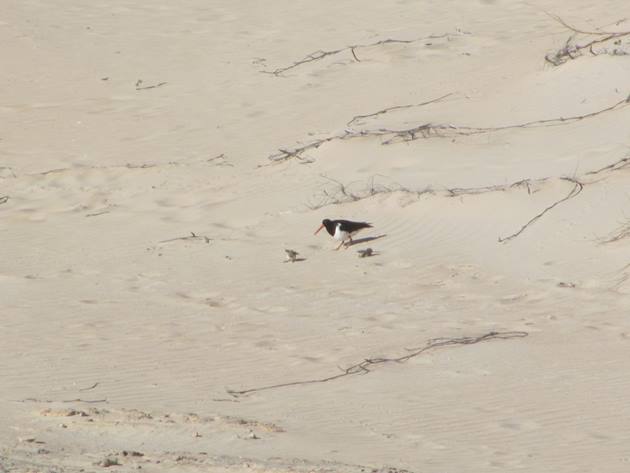
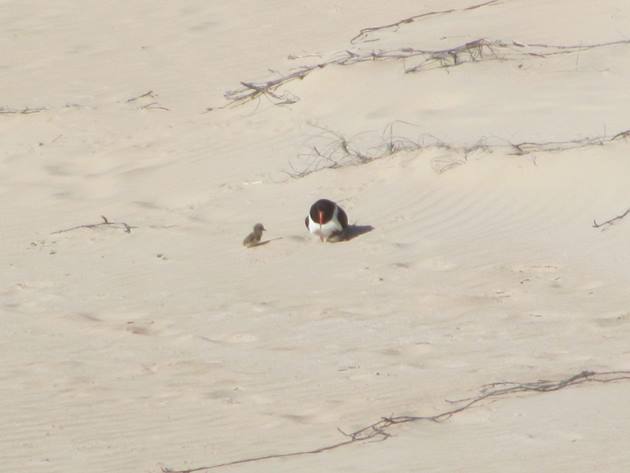
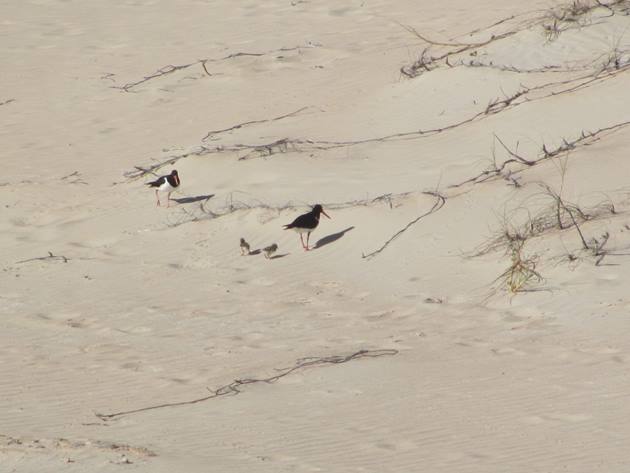
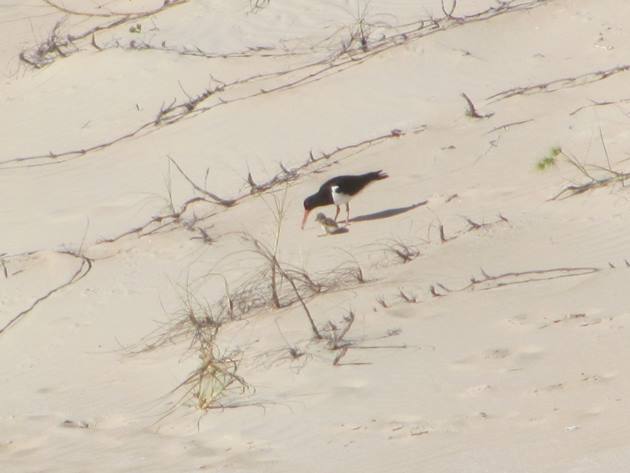
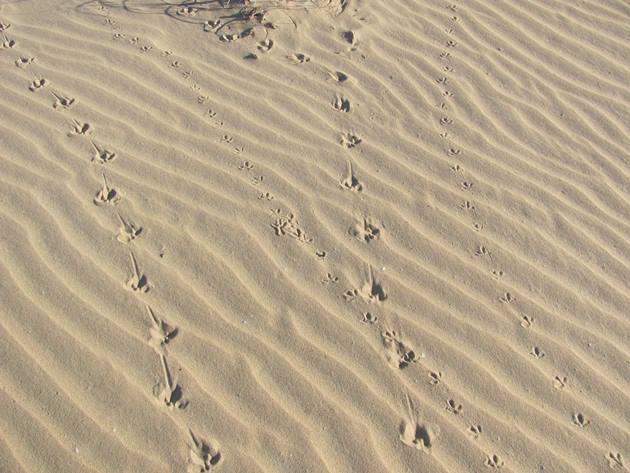
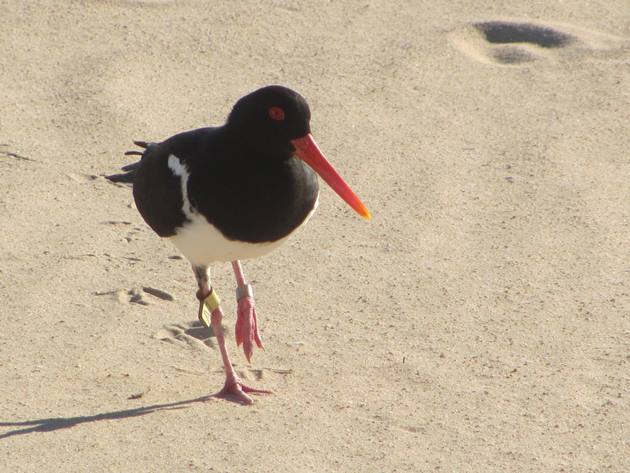
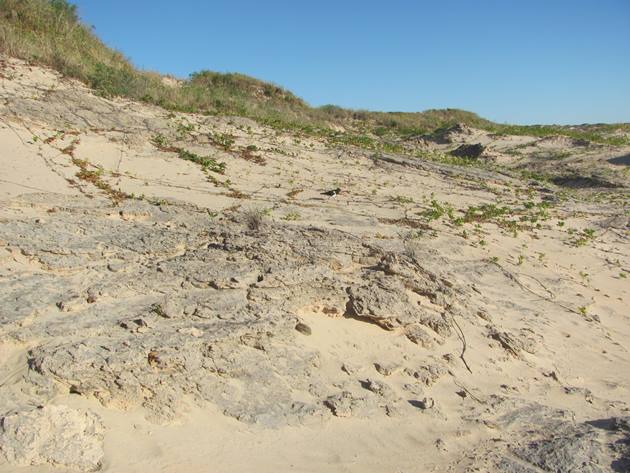
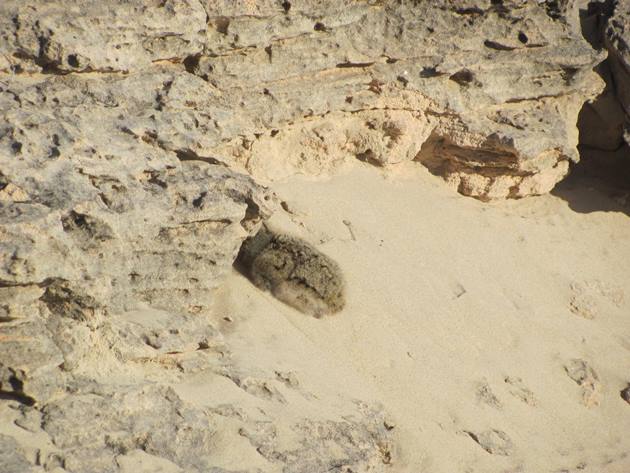
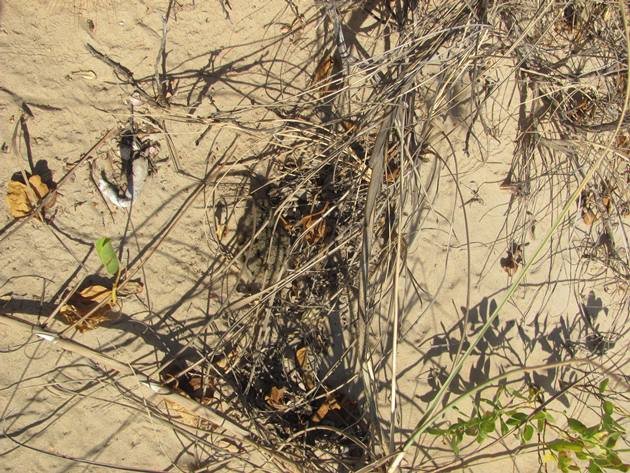
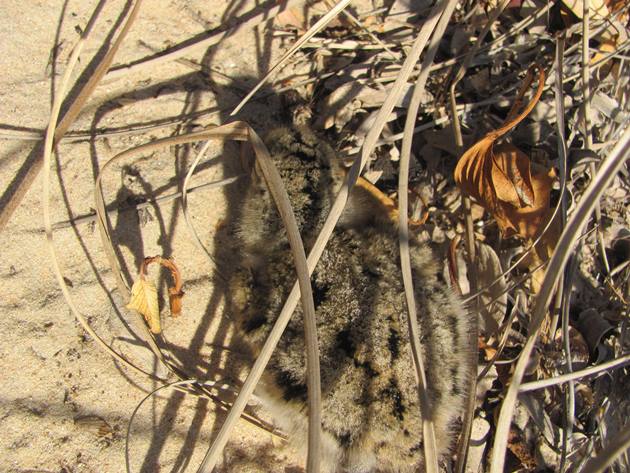
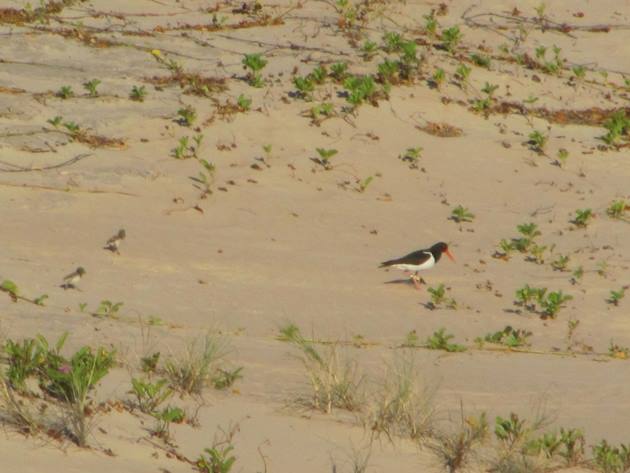










Beautiful birds and fabulous photos! I sure hope these two survive.
So do we! 🙂